The 'Heart' of a Steamship Wreck: The Marine Steam Engine
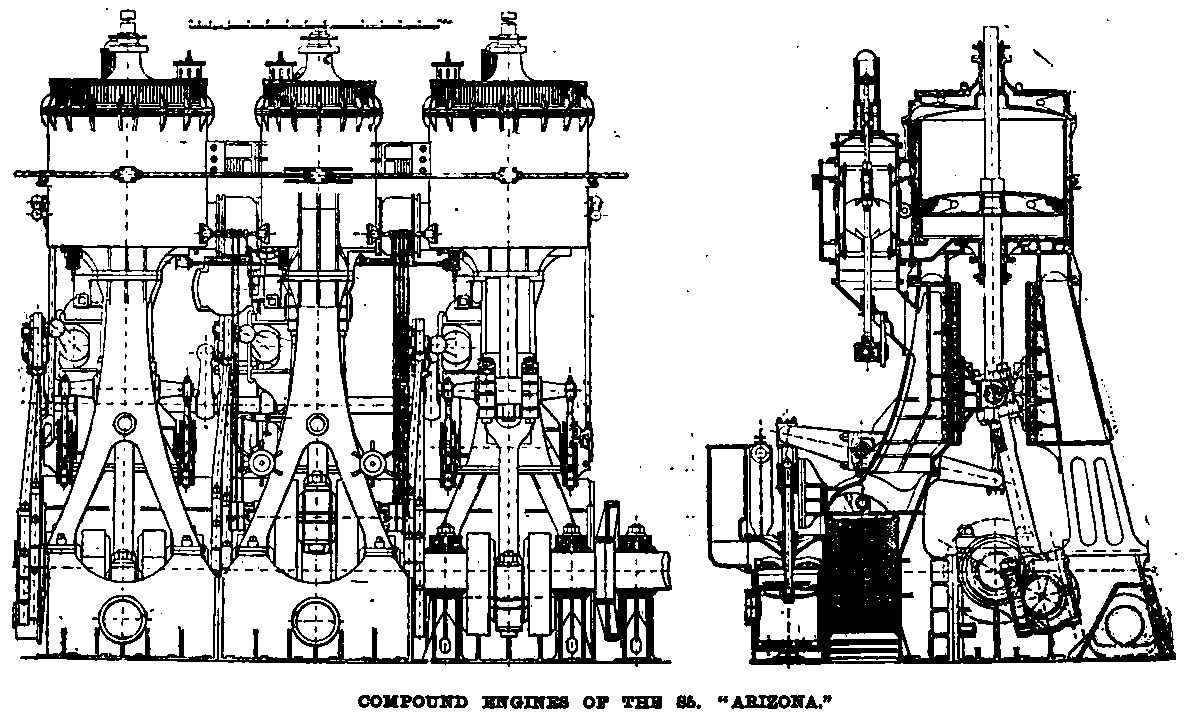 |
The introduction of steam power to the shipping industry during the 1800s slowly ushered out the long age of sailing ships. These new vessels no longer needed to depend on the vagaries of wind to make their long ocean passages. While still sporting masts and sails for emergency use until they became more and more reliable, these ships slowly evolved into a distinct form. Belching black smoke from the coal they burned in their boilers, these ships possessed a rythmic heartbeat and distinct vibration caused by their often massive steam engines.
The earliest steam engines were quite simple, consisting of a single cylinder containing a piston that was driven up-and-down by expanding the steam created by a boiler. A variety of mechanisms were invented to convert the linear motion of the steam piston into the rotary motion needed to drive a paddlewheel or screw propeller. Walking beam engines, side-lever engines and oscillating engines were all tried, but it was the advent of the screw propeller that eventually caused engine designs to converge to the 'inverted compound engine,' where the steam cylinders were arranged in a line over the crankshaft.
Early boilers were made of iron, but the advent of stronger steels allowed for higher steam pressures, making the use of 'compound' engines practical. In a compound engine, the steam was expanded in stages, driving a series of cylinders of increasing size. The steam was first partially expanded in the high-pressure cylinder; the exhaust steam was then fed into a low-pressure cylinder to expand it further. This type of compound engine increased the efficiency of the whole system, greatly reducing coal consumption. The addition of a third expansion stage resulted in the ubiquitous 'triple-expansion' steam engine; sometimes a fourth stage was added for a quadruple-expansion engine.
Mostly built of iron for durability, the marine steam engine seems to defy disintegration, even in the deep ocean. While the hull and appointments of sunken ships slowly corrode and collapse, their stout steam engines remain mostly upright and largely intact--often 'the last man standing' as the rest of the ship succumbs to the march of time and collapses to rubble strewn across the ocean bottom. |
| The compound steam engine of the Guion Liner Arizona, the immediate predecessor to the Oregon, which had a nearly-identical engine (below right). |
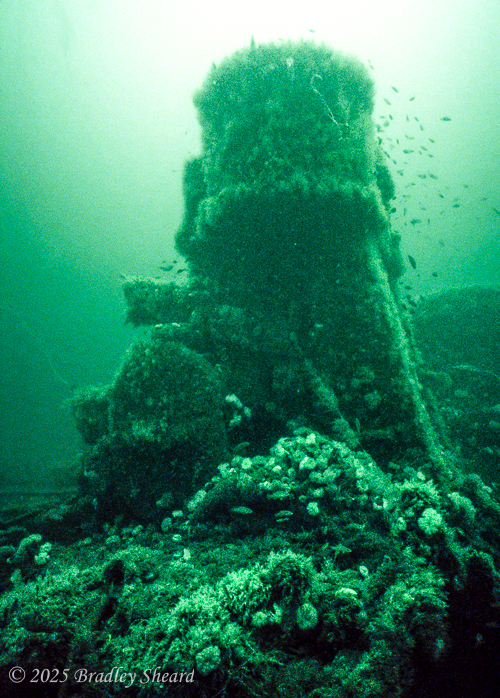 | 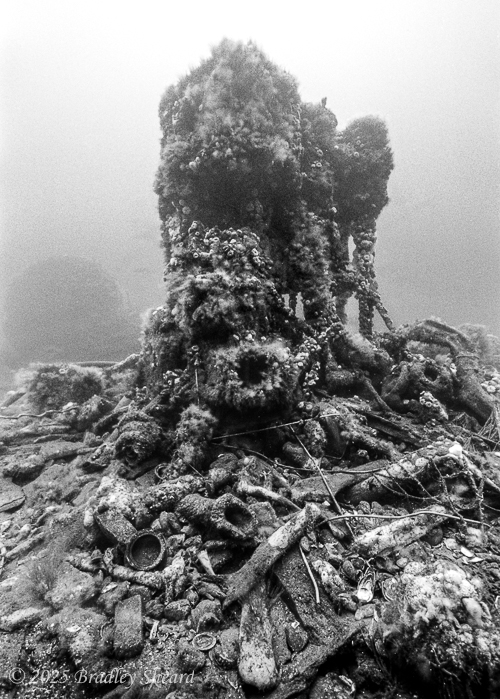 |  |
| Unidentified shipwreck "Yankee" (July 1987, film) | Freighter Lucy Neff (July 2005, film) | Passenger steamship Oregon (September 2019, digital) |
| This wrecksite has long been called "The Yankee Wreck" although it is not her identity. It was clearly a small steel/iron freighter, and the wrecksite is dominated by a large compound steam engine and a pair of boilers. | Although this wreck has not been positively identified, it is believed to be the Great Lakes steamer Lucy Neff (formerly WP Ketcham). She was built in 1893 with a 550 hp triple expansion steam engine, and was a rather small wooden vessel measuring only 225 feet long. The engine is the dominant feature of the wreck site. | The Oregon was launched for the Guion Line in 1883, and later purchased by Cunard. She was driven by a massive 3-cylinder compound engine of 13,575 hp, giving her a speed of 18 knots. She was fast enough to capture the coveted Blue Riband for the fastest Atlantic crossing three times in 1884. |
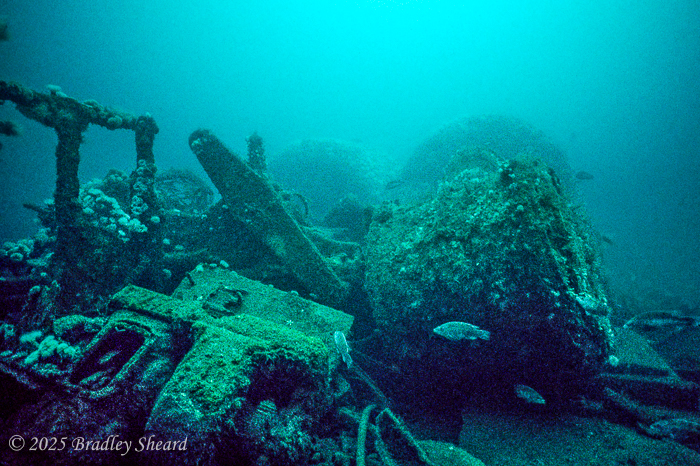 | 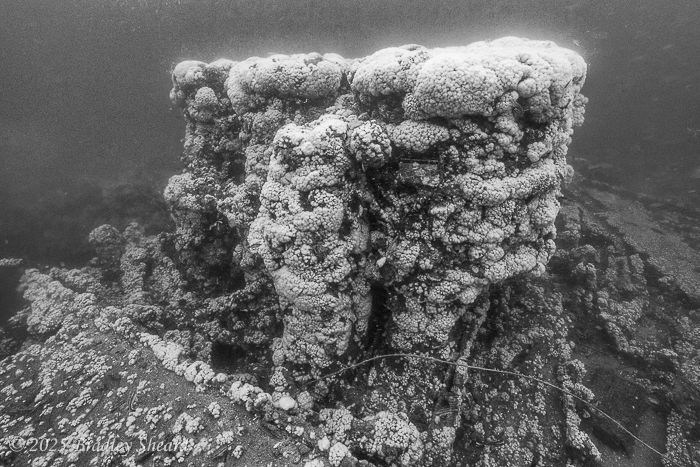 |
| Freighter Durley Chine (June 1987, film) | Passenger-freighter Monroe (August 2009, digital) |
| The small freighter Durley Chine (formerly known only as the "Bacardi Wreck") was identified when Rick Jaszyn recovered the ship's bell in 1987. Built in 1913 in Cardiff, she was sunk in a collision in 1917. Like many small freighters of the era, she had a rather small, triple-expansion engine of only 209 hp. When we dived the wreck in 1987 the small engine was collapsed (above), with one of the steam cylinders lying on its side; the pushrod can be seen clearly protruding from the cylinder. | The Old Dominion Steamship Company passenger-freighter Monroe was launched in 1902 and sank off Chincoteague Virginia in 1914 after a collision with the steamer Nantucket. She was powered by a single triple-expansion steam engine of 4500 hp. |
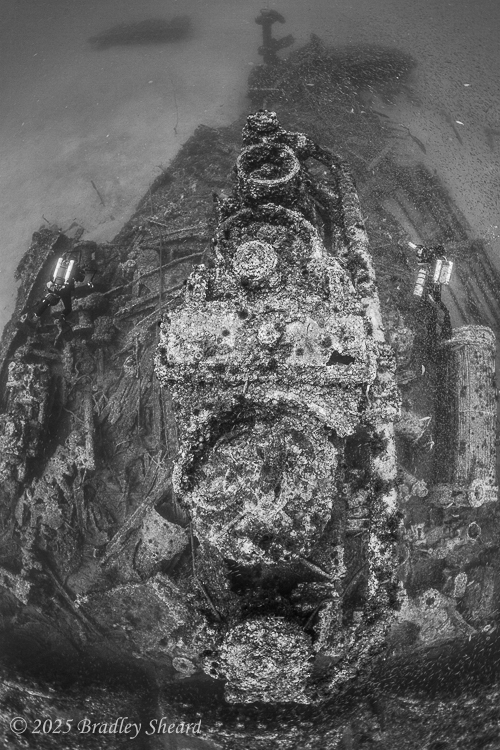 |  | 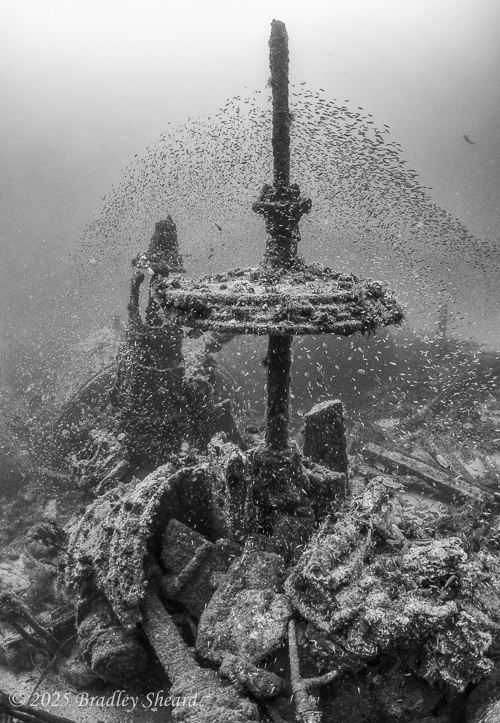 |
| WWII tanker Dixie Arrow (June 2018, digital) | WWII tanker Tamaulipas (June 2012, digital) | WWII tanker FW Abrams (June 2021, digital) |
| The tanker was built in 1921 when steam engines had evolved to high efficiency. She was equipped with a quadruple-expansion engine producing only 625 nhp, yet was capable of 11 knots. This overhead view of the wreck site clearly shows the in-line layout of progressively larger (and lower pressure) cylinders, with the small high pressure cylinder at the far end, progressing to the LP cylinder at the near end. | Built in 1919, the tanker Tamaulipas was driven by a classic triple-expansion engine of 422 nhp. Standing just astern of the engine looking forward, the massive low-pressure cylinder towers overhead. | Built in 1920 and originally named the Nora, the ship was later renamed FW Abrams. Her three boilers supplied steam to a quadruple-expansion steam engine. The years have not been kind to the wrecked tanker, however, and her steam engine seems to have disintegrated. A lone piston, or cylinder head, stands upright on its guide shaft over the collapsed remains of the rest of the engine. |
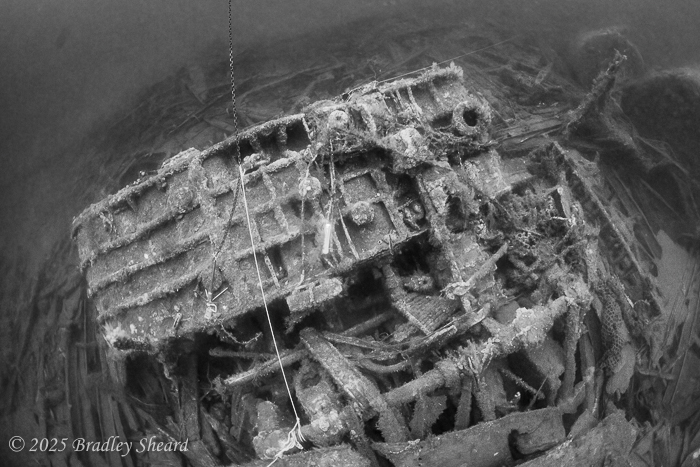 | 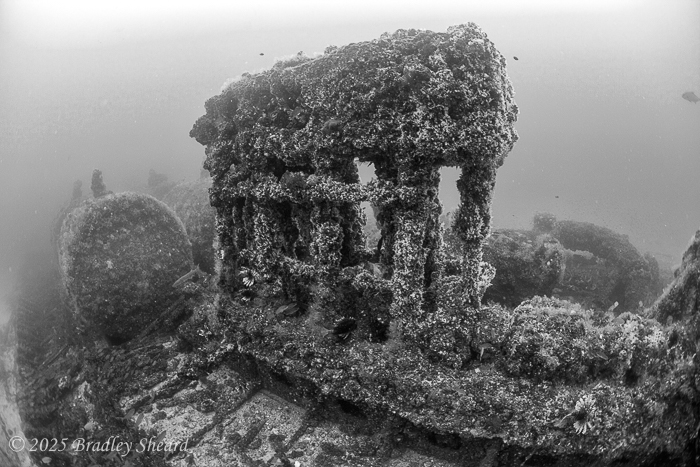 |
| Passenger-freighter Carolina (June 2014, digital) | Ellicott Dredge #4300 (July 2011, digital) |
| The history of the Carolina (ex La Grande Duchesse, City of Savannah) is a fascinating one. She was originally built with twin screws driven by a pair of quadruple-expansion engines. Extensive shortcomings in speed and excessive vibration eventually led to her being re-built into a single screw vessel, an expensive and unusual reconstruction requiring rebuilding the entire aft end of the ship. Reconfigured with a 4000 hp single triple-expansion engine fed by four boilers, this was her final mechanical configuration at the time of her loss to WWI's marauding U-boats. Today the engine lies nearly on its side on top of her broken-down hull. | This 1000 hp steam engine was not used to drive the vessel equipped with it--rather it was used to run a powerful dredge, installed on a barge and headed to the excavation of the Panama Canal. While under tow by the tug Tormentor, the dredge was lost in a storm south of Cape Lookout in 1909. The wreckage of the dredge is commonly known as the "Lobster Wreck." |
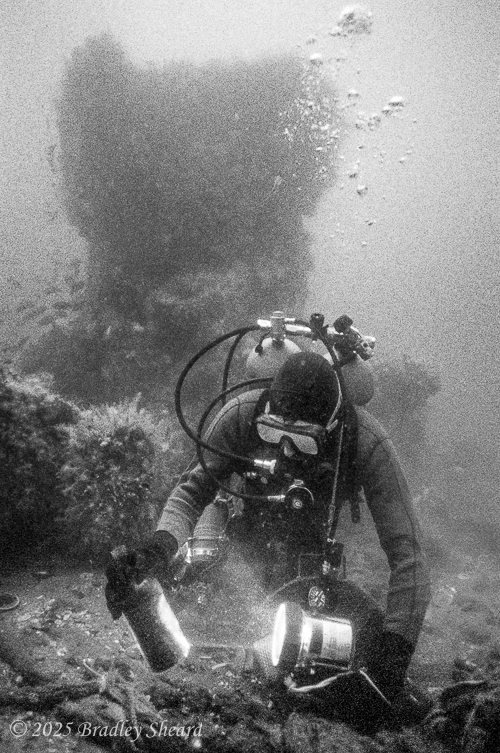 | 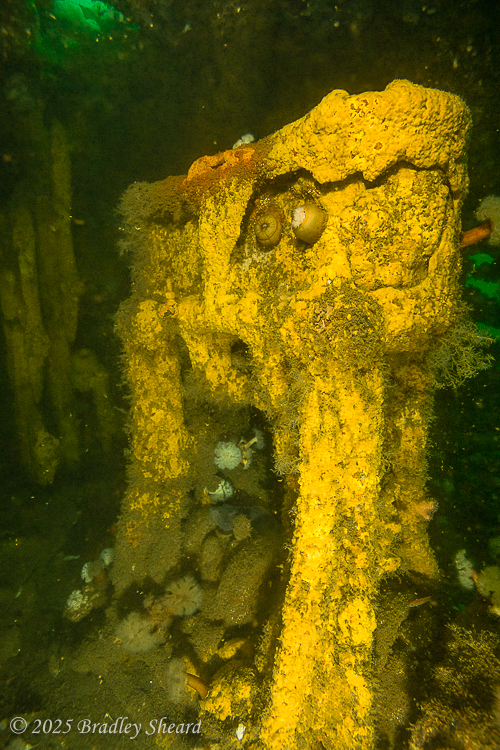 | 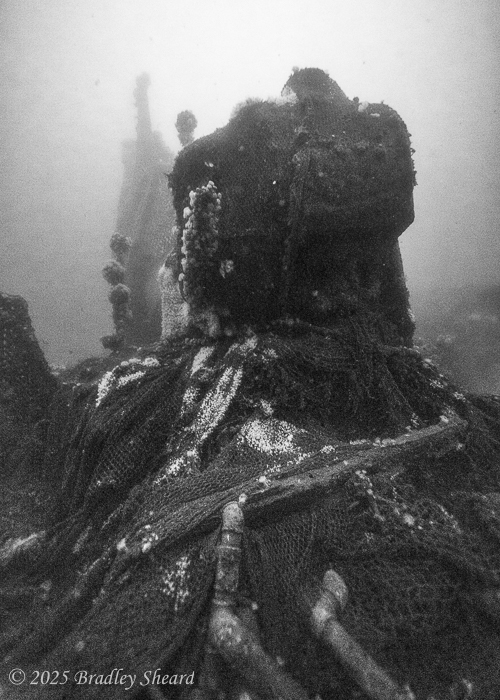 |
| Unidentified: "Catamount Wreck" (July 1994, film) | Unidentified: "Big Wood Wreck" (August 2006, digital) | Unidentified: "Eggplant Steamer" (July 2015, digital) |
| This trio of steamship wrecks has, to date, defied identification. Each clearly was driven by a steam engine. The "Catamount Wreck", located off NY, is likely a rumrunner dating to the prohibition, with a small steam engine and liquor bottles scattered all over the site. The "Big Wood Wreck" seems a mystery, but has an upright compound engine sitting amidst the remains of a wooden hull. The "Eggplant Steamer" sits south of Montauk NY in 335 feet of water; Joe Mazraani recovered a bell from the site with a barely legible inscription: "Elm City" but no record of the loss of a ship by that name has been found. |
 |  |
| WWII tanker Atlas (July 2010, digital) | WWII freighter Caribsea (July 2010, digital) |
| Built in 1916, the tanker Atlas was driven by a classic triple-expansion engine of 565 nhp. Like so many shipwrecks from WWII off the US East Coast, the stoutly-built engine stands upright and proud of the bottom as the remainder of the ship slowly collapses. | A small, 251-foot-long freighter, Caribsea was torpedoed during the war east of Cape Lookout. She was driven by a 352 nhp triple-expansion engine that is now one of the dominant features of the wreck site. |
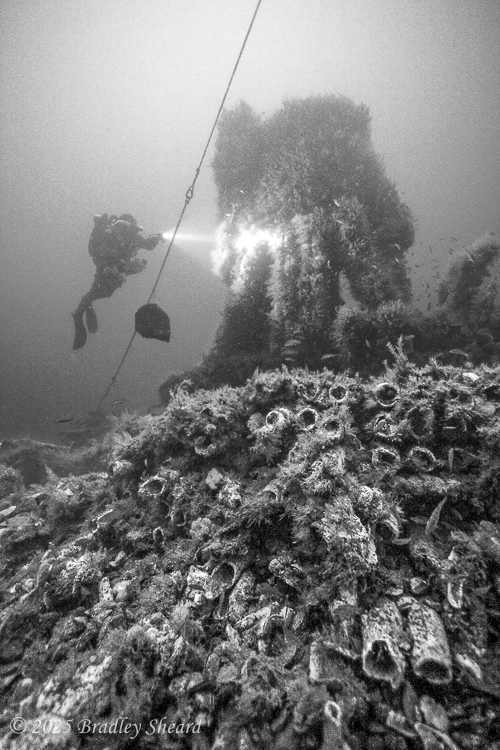 | 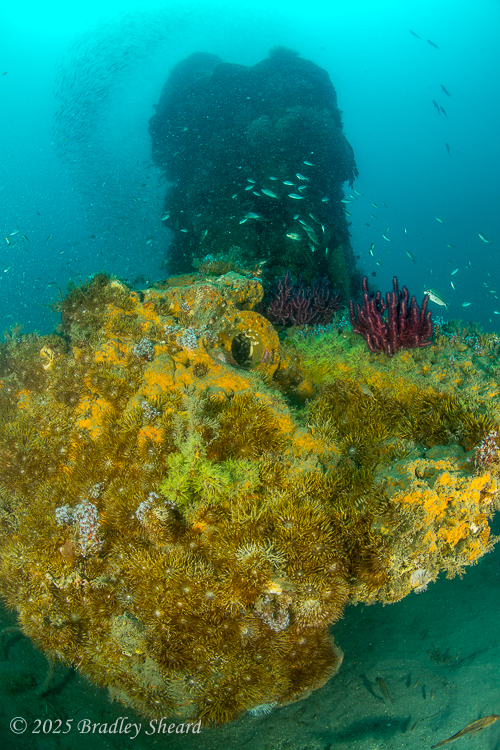 | 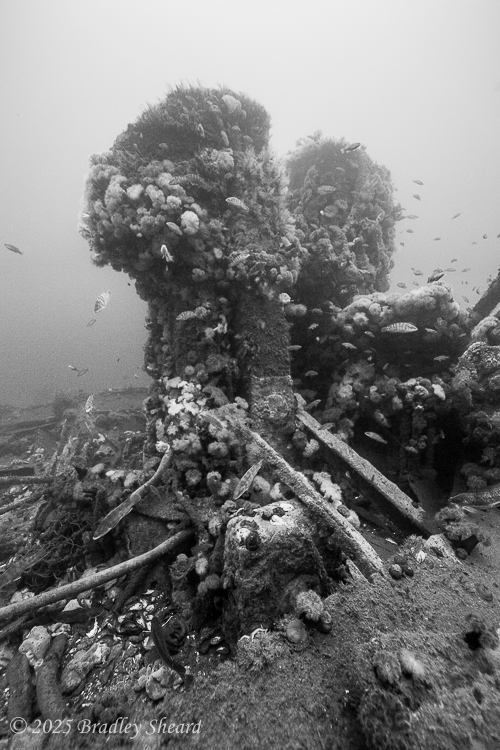 |
| Unidentified?: "Max's Wreck"--USS Montgomery (July 2008, digital) | Wooden-hulled steamer Nevada (June 2015, digital) | Charles Morand (June 2009, digital) |
| The screw-steamer Montgomery was built in 1858 and commissioned into the US Navy in 1861 during the Civil War. Another early steamship, she was powered by a single-cylinder steam engine and a single boiler. The remains of the collapsed boiler can be seen in the foreground above, with the single-cylinder engine in the background. | Built in 1864, the relatively tiny steamer Nevada was driven by a simple, single-cylinder steam engine. Steam was supplied by a pair of "box boilers" just forward of the engine, which stands as the highest part of the wreck site today. | Built in 1884 and sunk in a collision in 1890, Charles Morand, also known as "Homer's Hot Spot", was a small, iron-hulled screw steamer. The wreck site is dominated by an erect 2-cylinder steam engine. |
 | 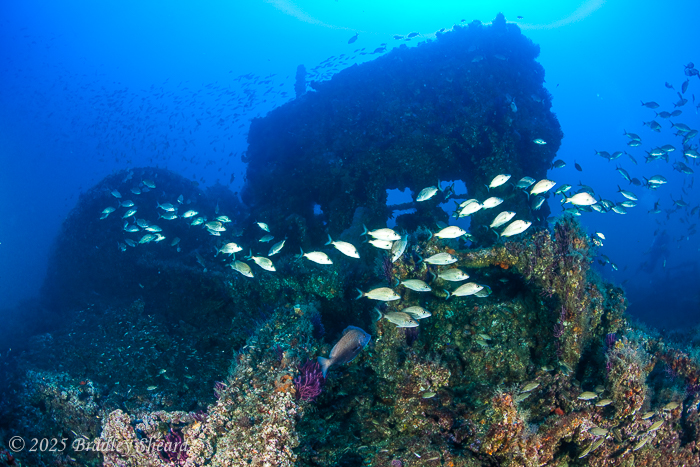 |
| WWII tanker Naeco (July 2010, digital) | Steam Freighter Normannia (July 2010, digital) |
| Another WWII casualty off the North Carolina coast is the tanker Naeco. Built with a 2600 ihp triple-expansion steam engine, the tanker broke in two after being torpedoed, with the two halves coming to rest on the ocean bottom more than two miles apart. | An older steam freighter built in 1897, Normannia foundered west of Cape Lookout in 1924. The ship was built with a 204 nhp triple-expansion steam engine that now forms the highest part of the ship's wreckage. |
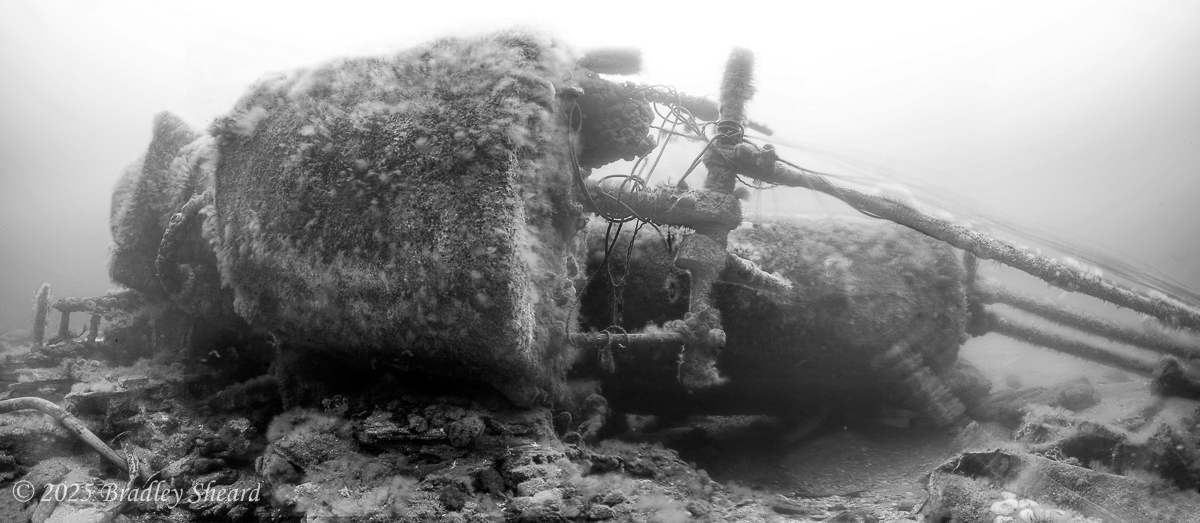 |
| Iron-hulled Paddlewheel Steamer Champion (September 2006, digital) |
| Built in 1859, the paddlewheeler Champion was powered by double vertical beam steam engine. The engines have fallen over on the wreck site and now lay on their side, with a walking beam lying in the sand nearby. |
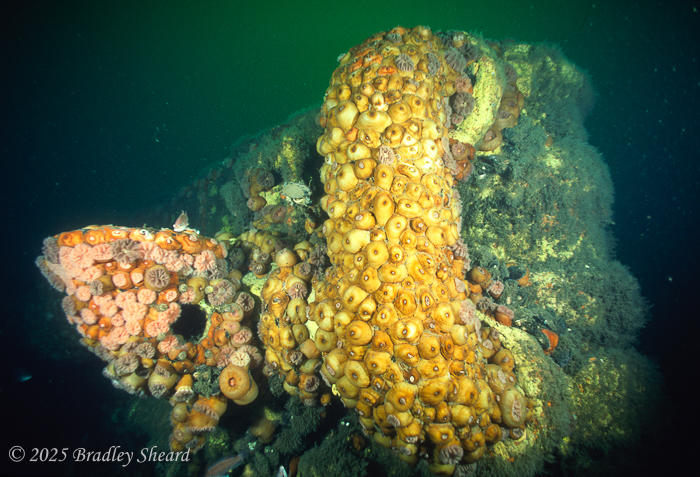 | 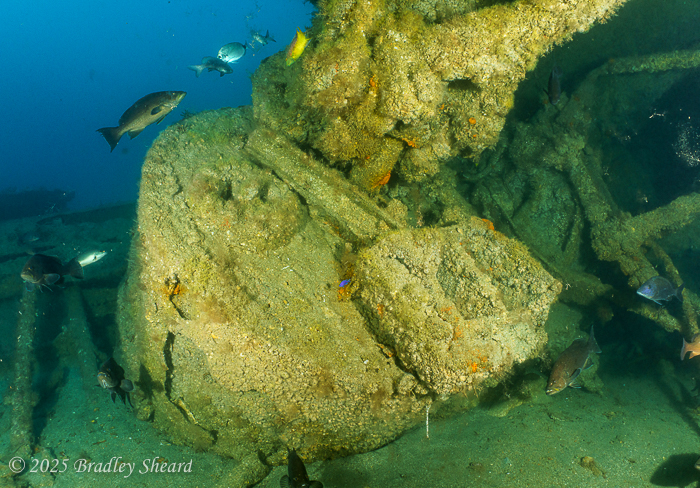 |
| United States Revenue Cutter Mowawk (October 1992, film) | WWII tanker WE Hutton, commonly called Papoose (April 2025, digital) |
| The small cutter Mohawk was built for the United States Revenue Cutter Service (predecessor of the US Coast Guard) at the turn of the last century. She was only 205 feet long and built with a small triple-expansion steam engine. | Built in 1920, WE Hutton is commonly known to divers and fishermen as the Papoose, although this is a case of mistaken identity. Mike Barnette's research led to the conclusion that this wreck is actually the Hutton. The wreck lies upside-down, and her deteriorating hull gives more and more access to her interior machinery spaces; here is one of the steam cylinders from her 422 nhp triple-expansion engine--upside-down, of course. |
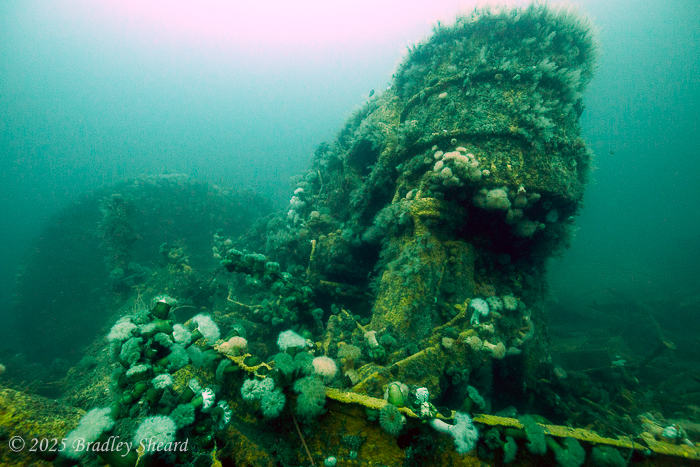 | 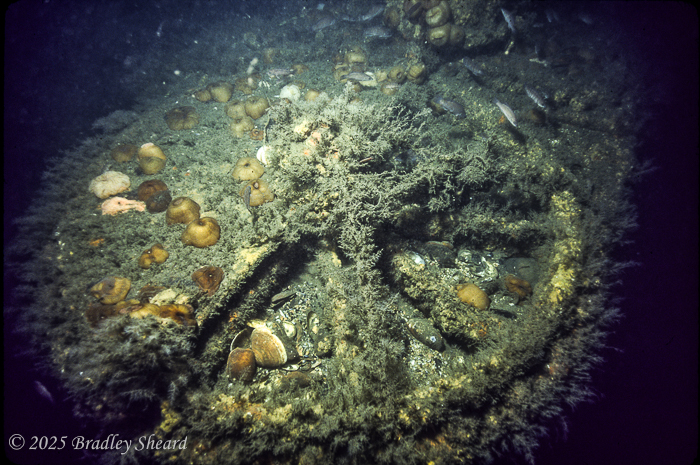 |
| Norwegian Steamship Hvoslef (July 2009, digital) | "Across Wreck" (December 1990, film) |
| The small steamship Hvoslef was yet another casualty of the Second World War off the US East Coast. She was powered by a 314 nhp triple-expansion steam engine, and as so often is the case, it still stands upright on the ocean bottom. | A small steam engine on an unidentified shipwreck sitting on the edge of the "mudhole" off the NY/NJ coast. |
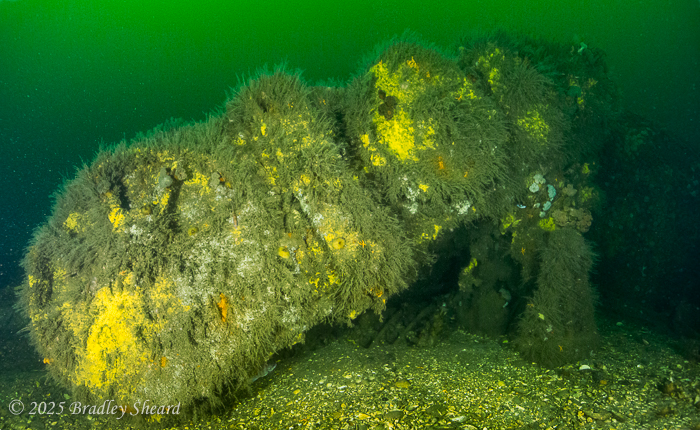 | 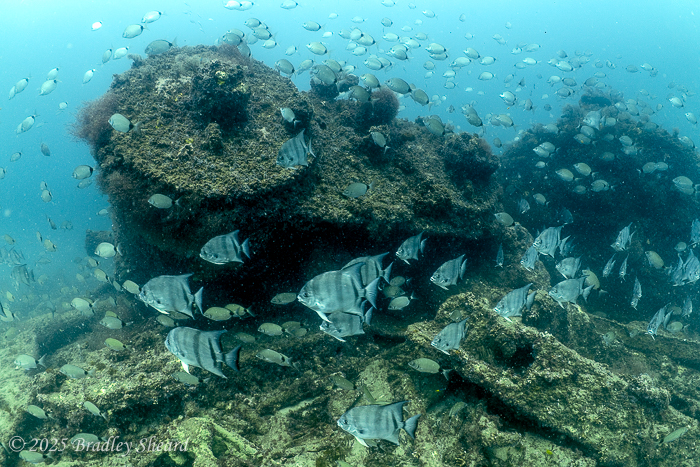 |
| Unidentified Steamship: "Terror Wreck" (September 2015, digital) | Unidentified (September 2021, digital) |
| This triple-expansion steam engine lies on its side at an unidentified wrecksite off the Delaware/Maryland border, with the ominous popular name "Terror Wreck." | An unidentified steamship off the North Carolina coast, clearly sporting a compound steam engine. |
REFERENCES:
Hocking, Charles. "Dictionary of Disasters at Sea During the Age of Steam," 1969
Gentile, Gary. "Popular Dive Guide Series," various dates
Sheard, Bradley. "Lost Voyages: Two Centuries of Shipwrecks in the Approaches to New York," 1998




























